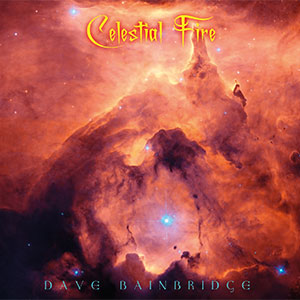Music brings things together. Sounds and silences. Audience and performer. The physical and the spiritual.
This week’s gathering of Musical U posts celebrates this coming together – whether it be the simple clapping of two hands, the joining of two rhythms to form syncopation, or the friendships that bond musicians, and the ascension of music into transcendence.
But first, let’s meet a musician who brings inner struggles out by combining her love of “beautiful” melodies with “ugly” sounds:
Transformer
 Anastasia Voitinskaia joined the Musical U team as Assistant Content Editor earlier this year. In fact, if you’re a fan of Musical U posts (and if you’re not, you can start today!), you’ve enjoyed what happens when Anastasia brings together her many musical, writing, and graphic design talents to transform raw content into finished blog posts.
Anastasia Voitinskaia joined the Musical U team as Assistant Content Editor earlier this year. In fact, if you’re a fan of Musical U posts (and if you’re not, you can start today!), you’ve enjoyed what happens when Anastasia brings together her many musical, writing, and graphic design talents to transform raw content into finished blog posts.
This week, we had the opportunity to learn more about Anastasia’s musician side.
You see, some of us chose music for love.
For others, music chose us – by force if necessary.
Despite the coercion, Anastasia dutifully put her all into her rigorous classical piano conservatory upbringing. Until one day something clicked.
Read more about how Anastasia continues to transform her musical life in Meet the Team: Anastasia Voitinskaia.
Hands Together Now
…or now, or – oops – now?
Clapping in time – something every child can do, right? Well, for some of us it’s not quite that easy. Ever notice that your clap doesn’t exactly line up with the crowd?
Ever wonder why? There is a reason, you know, and you don’t have to be embarrassed.
So what’s the big deal? Aren’t their musical skills that are way more important, like scales, scales, and more scales?
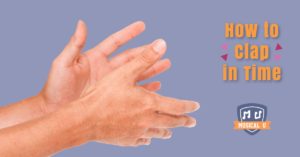 The truth is, bringing your two hands together in a rhythmic way is an important musical skill, and leads to fundamental understandings that will transform your musicality. So important that our friend, composer Sabrina Peña Young, wrote a whole post about it – so you, too, can learn How to Clap in Time.
The truth is, bringing your two hands together in a rhythmic way is an important musical skill, and leads to fundamental understandings that will transform your musicality. So important that our friend, composer Sabrina Peña Young, wrote a whole post about it – so you, too, can learn How to Clap in Time.
Being able to clap with the rhythm is an essential component to becoming a confident musician. It seems so simple, yet is also very unappreciated in music education. Africappella has this short lesson on how to get started with keeping the rhythm by clapping.
Clapping is a great exercise to help develop an internal sense of rhythm and will improve every aspect of your musicality. Apart from clapping, what tricks can you use to help develop your rhythmic qualities? AJ Block, from Metronome Online. presents fun ways to practice with a metronome.
Of all the instruments, the percussionist or drummer takes charge of the rhythm. While most of us are not drummers, there is a lot that we can learn about how drummers develop their ability to keep the beat. Drum Ambition has five tips to develop good time keeping.
Once you have the hang of keeping in time by clapping with the music, you are ready to explore the broader world of clapping music. This form of minimalism replaces standard percussion instruments with clapping. And then takes it into realms of rhythm and syncopation that go way beyond the norm! Adam Neely demonstrates an example and explains the genesis of this form of music:
Off the Beaten Path
Music can be seen as an interplay of expectations and surprises. When these surprises come in the rhythm, we have – in the most general sense of the word – syncopation.
Composers have long played with various species of rhythmic surprises, and syncopation really took off when African and European music came together in the Americas. Yet there are so many ways to syncopate, and so many terms to describe it, that really understanding, recognizing, and creating music with all these different forms can be overwhelming.
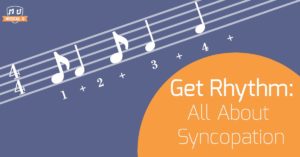 The Musical U team untangles the whole mess so you can Get Rhythm: All About Syncopation.
The Musical U team untangles the whole mess so you can Get Rhythm: All About Syncopation.
Learning to incorporate syncopation into your music can be uncomfortable at first, but it is hardly a skill that is unattainable. A useful method would be to take a cue from the lessons we learned about the importance of clapping during your rhythm ear training. This lesson from Hub Guitar walks you through some basic rhythms to get you started.
Did you get through these first exercises from Hub Guitar? Now you have the basics of syncopation down! The Orpheus Academy of Music has a more challenging take on syncopation.
Syncopation can be a difficult concept for many musicians to master. To help you along your journey, it can be helpful to watch a video that walks you through the process of counting a syncopated beat. Ross the Music Teacher has this video to help you along your way:
Are you ready to take your syncopation mastery to the next level? It’s time to apply syncopation to jazz and improvisation. Bill Hilton will get you started with this video tutorial.
Weaving Together the Strands of a Musical Life
In his long and ever-growing career, Dave Bainbridge has learned many instruments, jammed the blues with the likes of Buddy Guy and Jack Bruce, composed music for film and video, written, produced, and recorded many albums of music with bands like Celestial Fire and Celtic prog-rock famed Iona, enjoyed many side projects and duo projects, and is now touring with The Strawbs.
What has kept him going, kept him inspired?
Learn the importance of bringing together deep friendship with deep transcendence and you will understand the Making Music for Film, with Friends, and in Spirit, with Dave Bainbridge.
Dave owes much of his success to the connections that he has made throughout his years of performing music. If you are ready to form new relationships and expand your relationships, University of Rock provides the basics to music networking.
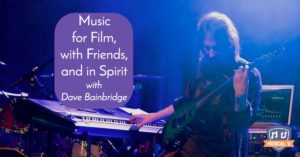 Dave talked about how his faith has influenced his musical growth and inspired many performances. He said, “I’m convinced that great art awakens something very deep within us, that can remain dormant for much of the time.” If music has inspired your spiritual growth, how can you find other like-minded musicians to collaborate and create beauty together? Ashley Danyew provides a non-salesy guide to recruiting musicians for your music ministry.
Dave talked about how his faith has influenced his musical growth and inspired many performances. He said, “I’m convinced that great art awakens something very deep within us, that can remain dormant for much of the time.” If music has inspired your spiritual growth, how can you find other like-minded musicians to collaborate and create beauty together? Ashley Danyew provides a non-salesy guide to recruiting musicians for your music ministry.
Musicians must always be looking for ways to continue to grow and expand their understanding of their craft. Self-development and continuing your personal music education will also provide opportunities to meet with other musicians. For more on the importance of ongoing self-development, this podcast from Music Entrepreneur HQ will inspire you to continue growing.
During one stage of Dave’s career, he experimented with film music and found that it required complete dedication. Apart from composing for film, getting one of your songs into a movie can really boost your career. How can you get started? Clint Productions has compiled these tips to submitting your music for film and TV.
Come Together
Are you inspired, like Anastasia Voitinskaia, to combine your talents in a musical job you love? Or, like Dave Bainbridge, establish deep friendships that feed a lifetime of music-making? Or bring different rhythms together to syncopate your sweet sinuous sounds?
Maybe you’re just trying to get your two hands to agree to come together at the same time…
However you’re reaching to harmonize your musical life, take a few minutes to marvel at how music brings it all together.
The post Syncopate, Clap, Transform, and Transcend appeared first on Musical U.
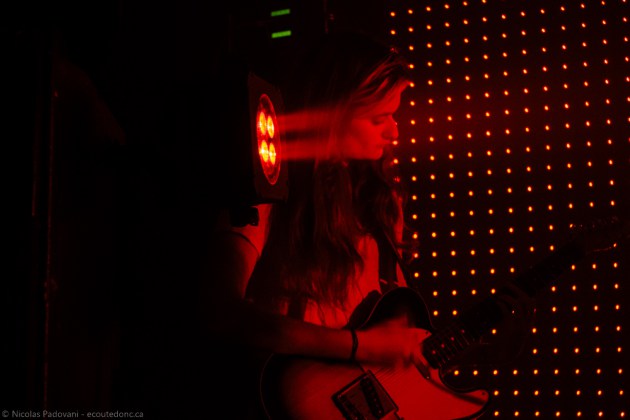
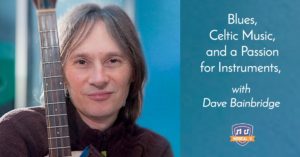
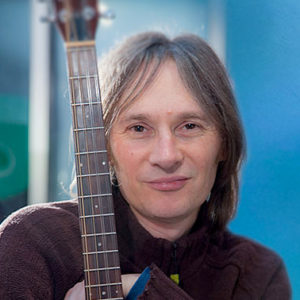 This was in the mid-1980s and although they could have used library music, the studio’s unique selling point was that every production they did, no matter how big or small, had music specially composed for it. I probably did getting on for a 100 jobs for that company over the next 10 years, writing music for all kinds of short commercial films and ads, and they still occasionally call me up if there’s enough budget to commission new music (it’s now run by the original studio owner’s son!).
This was in the mid-1980s and although they could have used library music, the studio’s unique selling point was that every production they did, no matter how big or small, had music specially composed for it. I probably did getting on for a 100 jobs for that company over the next 10 years, writing music for all kinds of short commercial films and ads, and they still occasionally call me up if there’s enough budget to commission new music (it’s now run by the original studio owner’s son!).
